7 Common Cacti Problems And Solutions Shared By Nursery Growers


Elizabeth is a Permaculture Garden Designer, Sustainability Consultant and Professional Writer, working as an advocate for positive change. She graduated from the University of St. Andrews with an MA in English and Philosophy and obtained a Diploma in Applied Permaculture Design from the Permaculture Association.
Reviewed By PETER LICKORISH

Peter is a Horticulture Lecturer and self-employed Horticulturist, with a passion for diverse areas of the industry - from garden design to the science behind plant growth and propagation. He has completed the Royal Horticultural Society’s Master of Horticulture (MHort) Award and lectures on RHS courses at Bedford College.
Contributions From DARREN EVANS

Darren is the Plant Manager at Pugh's Cacti, a wholesale supplier of cactus and succulent plants to garden centres in the UK, based in Worcestershire.

Daniel is the Owner of the plant nursery Ottershaw Cacti, where he grows and sells a variety of cacti and succulents, a role he has carried out for 40 years. Daniel has won many RHS gold medals at various flower shows up and down the country and was also shortlisted for the 2022 RHS Plant of the Year at the Chelsea Flower Show.

Co-Owners of Piccolo Plant Nursery, Tom and Giulia have had 9 years' experience specialising in succulents. They were awarded with a 4 Flower Plant Award at their first RHS Garden Rosemoor Flower Show in 2022.

With decades of experience growing cacti and succulents, David is the owner of Coach House Cacti, a specialist seller based in Dorset. He has won multiple Gold medals at various RHS Flower Shows throughout the years, with his achievements featured online. David is also a member of the British Cactus and Succulent Society.

Dave Goulson is the Professor of Biology at the University of Sussex and a specialist in the Ecology & Conservation of bees and other insects. He founded the charity the Bumblebee Conservation Trust in 2016 - which now has over 12,000 members - and he is the Director of The Buzz Club. Dave has published more than 300 scientific articles and several books on ecology and insect conservation, including Gardening For Bumblebees.
There are many cacti that can be grown as houseplants in the UK and even a few that are hardy enough to be grown outdoors in our climate.
These are fascinating plants adapted to dryland or desert growing conditions.
It is the ways in which these plants have adapted to low rainfall environments that dictate how they are cared for and where they are best grown.
Whichever cacti you are growing and wherever they are placed, it is important to pay attention to the needs of these plants and to understand what they require.
Most of the most common problems and issues when growing cacti are caused by:
- Overwatering or poor drainage.
- Underwatering.
- A lack of light.
- Excessive brightness.
- High humidity.
- Cold and wet conditions in winter.
- Sap-sucking pests.
As you can see, many of these problems and issues can easily be avoided or tackled by placing a cactus in the right spot and caring for it correctly.
Read on for a more in-depth discussion of the different things that can cause problems with these plants and their subsequent solutions.
1) Overwatering Or Poor Drainage
“I grew up in California amongst vineyards, orchards and cactuses,” says Alley Marie Jordan, a garden historian.
“Instead of a hedge like most UK houses have, we marked our garden with cactus walls and palm trees.
“In California, you have to search for shade and water access, whereas in the UK you plant for good drainage and look for sun!”
Since cacti are adapted to very dry environments, some of the most common problems relate to overwatering or poor drainage.
It is important to make sure you do not overwater a cactus because this can damage the plant roots, cause growth to be stunted, lead to blistering and rot can set in.
These plants require free-draining conditions and as well as making sure that you do not overwater, you also need to make sure that drainage is excellent at all times.
“This can be achieved by generously mixing horticultural grit with compost and ensuring drainage holes are present and not likely to clog up,” shares Master Horticulturist Peter Lickorish.
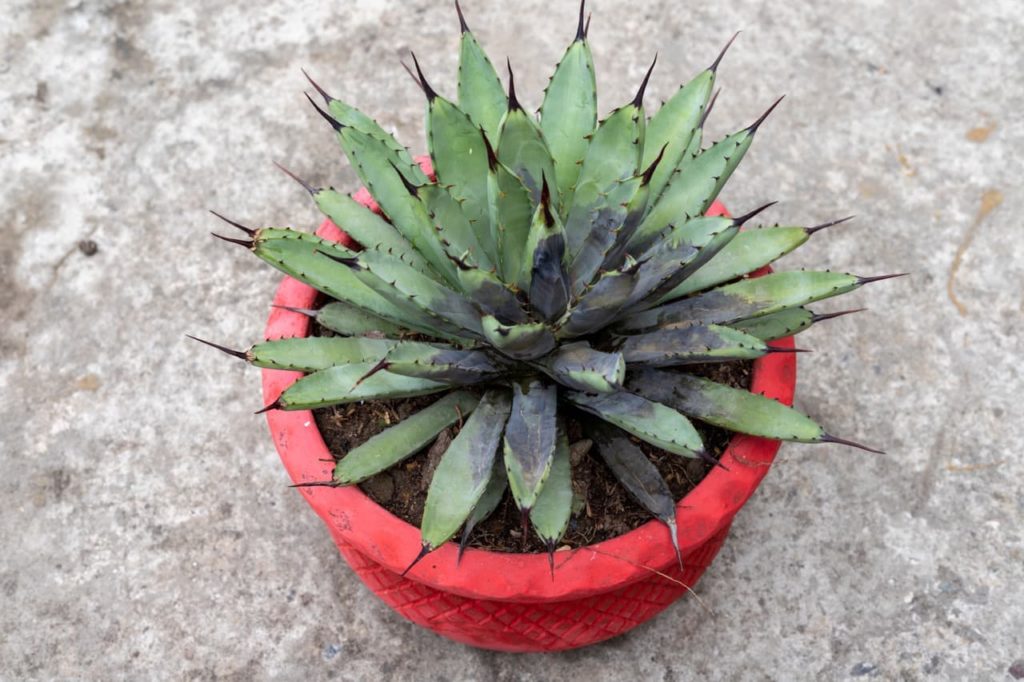
Excess water must always be able to drain away freely, otherwise, when left in standing water or boggy conditions, the roots can often rot.
When thinking about how much water plants need, you should always consider the native environment of the plants you are watering, as Daniel Jackson, the Owner of Ottershaw Cacti, explains:
“Their native environments are often very dry, such as the bright and hot lands of South Africa and Mexico, not the naturally soggy lands of Surrey!”
The amount and frequency of rainfall in their native range will help you understand how much water they will require and the frequency with which they should be watered.
“Only water after the soil has dried out and reduce this in the winter months,” says Darren Evans, the Plant Manager at Pugh’s Cacti.
2) Underwatering
However, do not think that because cacti come from desert environments, they do not need to be watered at all.
Of course, cacti can be very drought tolerant, but they do need some water.
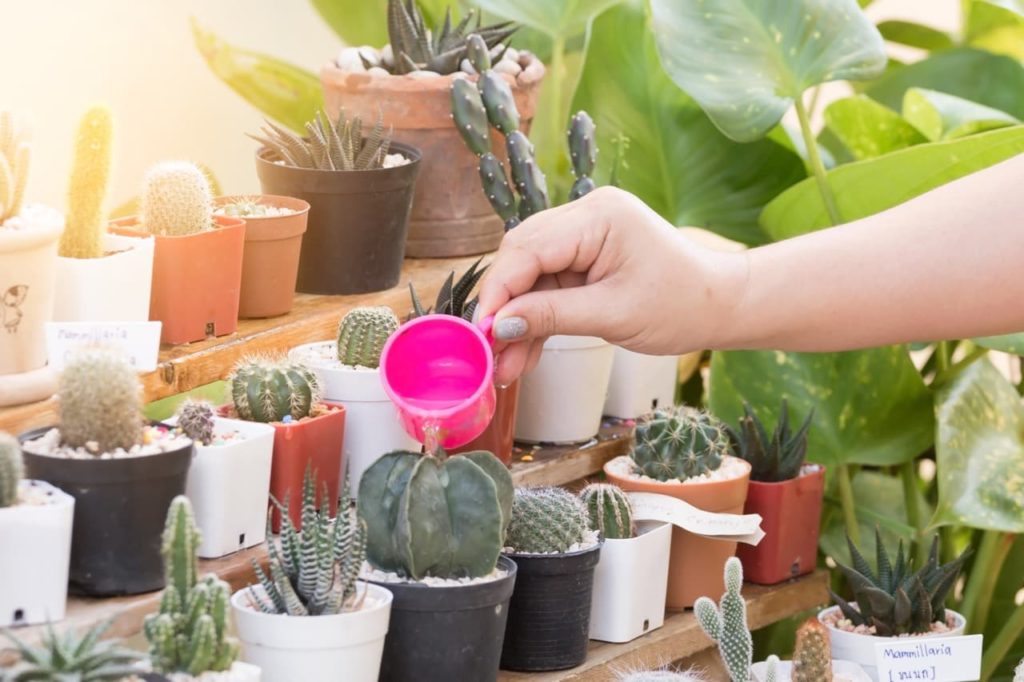
Under-watering cacti can lead to shrivelling and the growth of the plant may slow considerably or the new growth might be misshapen.
“Increase watering as the weather warms in spring and only reduce watering in the Autumn,” advises David Ennals, Owner of Coach House Cacti.
3) A Lack Of Light
If cacti do not get enough light, they can also end up being weak and misshapen.
Indoors, cacti will generally need a bright spot, but one out of direct light.
Outdoors, hardy cacti will typically need a sunny spot that is as warm and sheltered as possible.
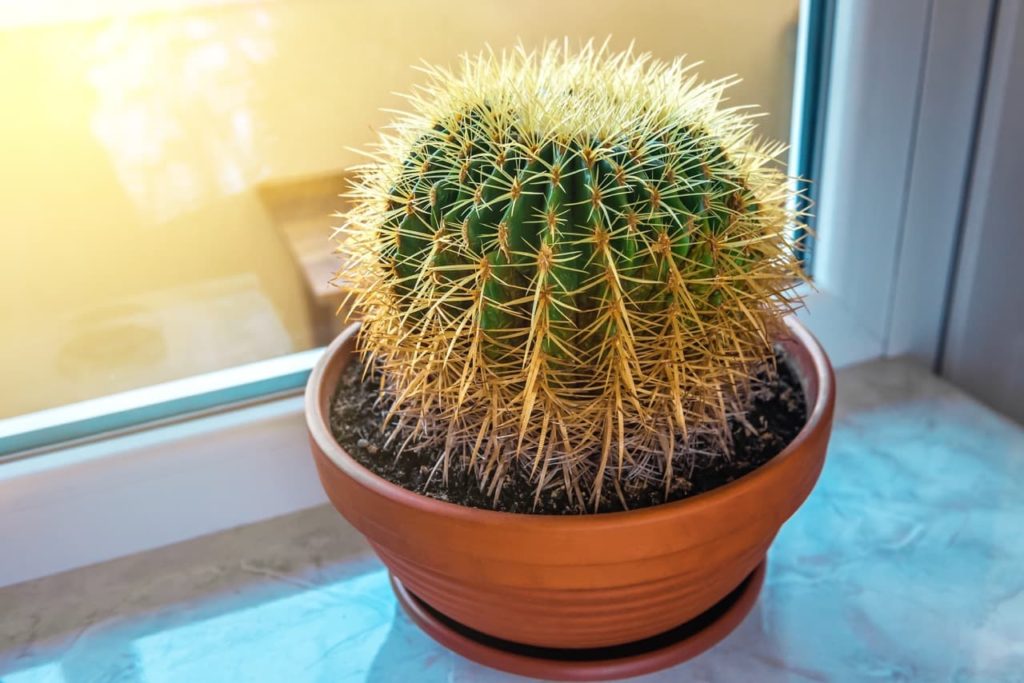
“We often get asked ‘why does my plant look like this?’ and it’s usually due to insufficient light levels on a window sill inside the house,” Tom Adkin & Giulia Consolandi from Piccolo Plants Nursery share.
“Look into the natural environment that the plant would grow in and you will soon find the perfect spot for it.”
4) Excessive Brightness
Cacti generally need a bright location when grown indoors but can encounter problems in intense direct sun.
Too much sun is one potential cause of a problem known as cactus corky scab.
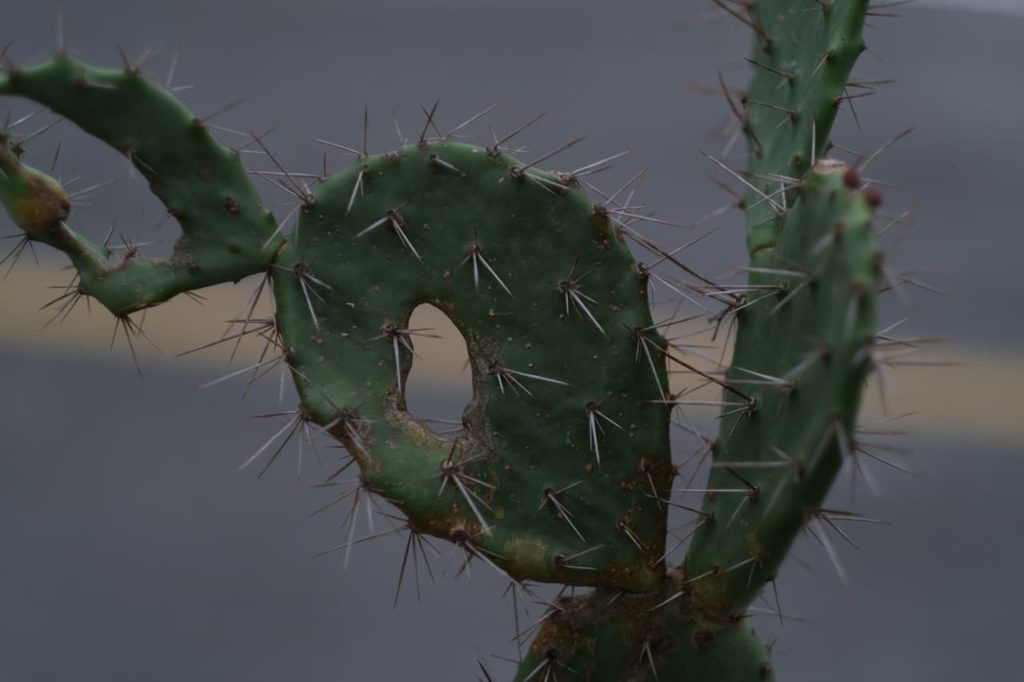
This problem causes brown spots to arise on the skin of the plant, which gradually form into calluses or scabs shrunken into the surface.
Move the plant out of intense sunlight and the problem may resolve itself.
5) High Humidity
Cactus corky scab can also be caused by high humidity, so it is important to work out whether too much bright sunlight or too high a humidity level is to blame.
Reducing humidity within your home might allow you to solve this problem when growing cacti as houseplants in our humid climate.
“For this reason, some combinations of houseplants just do not work well, such as cacti and most orchids, because the humidity cannot be at the right level to please both,” says Peter.
6) Cold & Wet Winter Conditions
“After the growing season, cacti are usually ready for a rest, so, during the winter months, require time to recover and get through the colder months,” says Darren.
“Because of this, make sure indoor-grown cacti are not kept by a radiator or heater throughout the winter.
“As a general rule, keep your cacti at around 10°C from November to February.”
For hardy cacti that are grown outside in the garden, cold temperatures can cause dieback on the plants and create patches of discolouration on their skin.

However, the main problem for gardeners who have cacti outside over the winter months is not the cold, but the wet.
Even cacti that can withstand colder temperatures will often need to be protected or brought indoors due to the high levels of precipitation in the winter months.
Growing under a porch may be the solution.
“Balancing moisture and temperature is important,” shares Peter.
“Remember that cold air can hold less moisture, so the relative humidity increases. This could be a real problem for overwintering cacti, so remember to select somewhere dry and keep humidity low through ventilation.
“However, avoid draughts. In a greenhouse, opening up the doors and vents on a warm winter day can help remove residual moisture. In a larger greenhouse, low vents or louvres could be opened slightly to circulate air, but keep cacti on shelving away from draughts.”
7) Sap-Sucking Pests
This final category of problem is a little different to all of the above because this is a problem that can arise regardless of where you place a cactus and the care you provide.
A number of sap-sucking insects can potentially take an interest in cacti and can cause a serious problem in larger numbers.
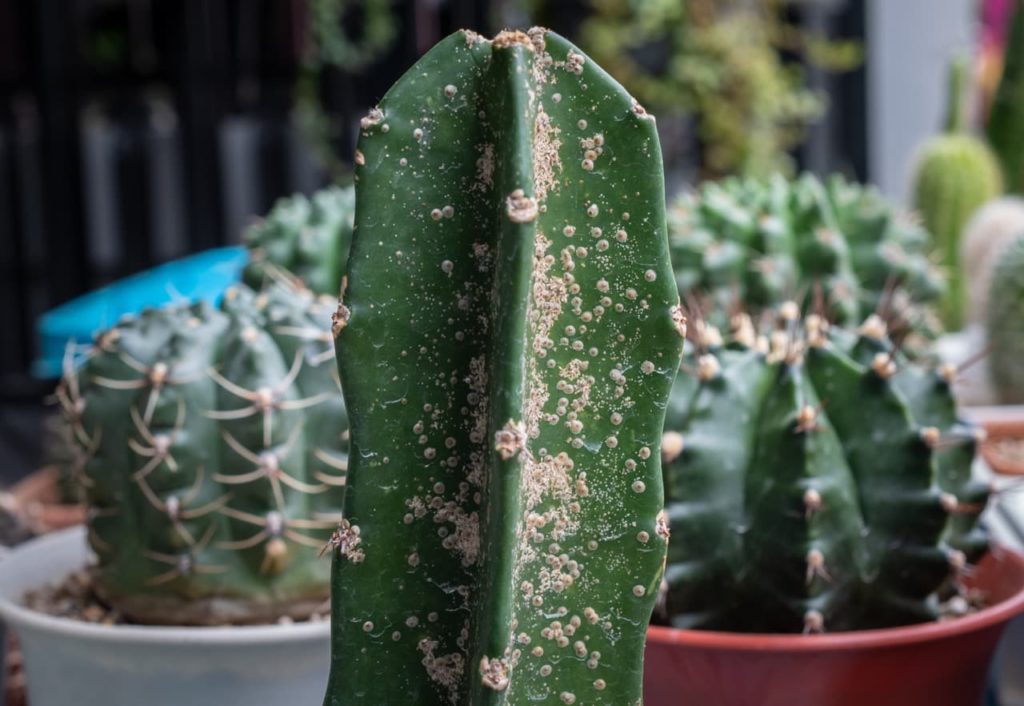
These can include scale insects, red spider mites and mealybugs, all of which can be common problems when growing indoors or under cover in a greenhouse or polytunnel.
The key thing is to remain vigilant and nip any pest problems on houseplants in the bud before they get out of hand.
Treatments based on oils and soaps, sold for houseplants, can work well.
These key problems and issues listed above are not uncommon when growing cacti, but are largely easily avoided.
As long as you place cacti in the right environment and provide the right environmental conditions, you should still find that even though issues can arise, these plants are incredibly forgiving and relatively easy to grow.
